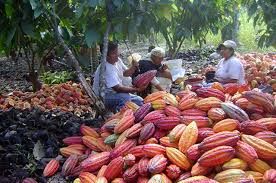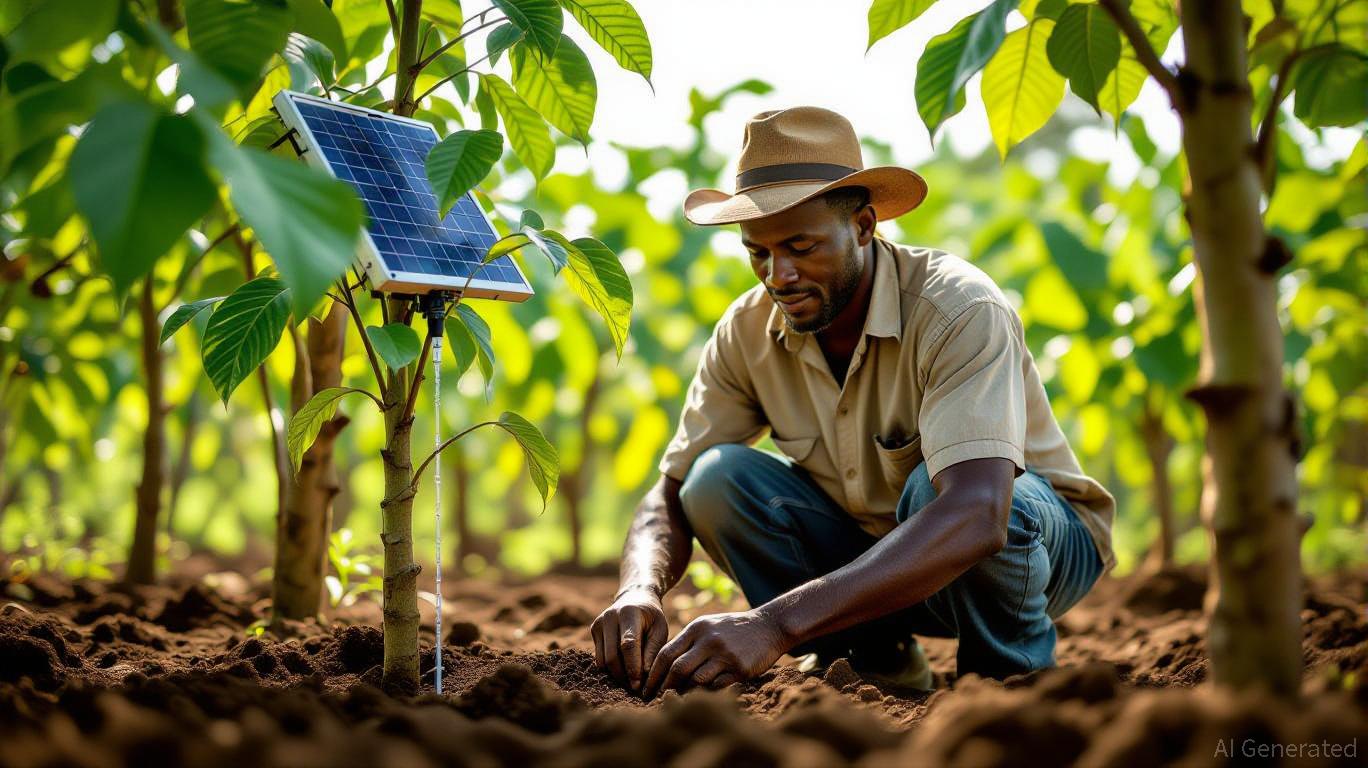The Cocoa Conundrum: Navigating Volatility, Demand Shifts, and Trade Policy in a Climate-Driven World

- Global cocoa prices fell to $9,500/ton in 2025 despite strong demand, driven by climate disruptions and policy shifts in West Africa.- Supply deficits persist due to aging crops, disease, and deforestation laws, while emerging markets offset U.S. inflation-driven demand fatigue.- Trade tariffs and EU deforestation regulations add costs, pushing investors toward climate-resilient firms and vertical integration strategies.- Sustainable innovation and policy agility emerge as critical for navigating cocoa's structural fragility and long-term market volatility.
The global cocoa market in 2025 is a study in contradictions: prices hover near $9,500 per ton after peaking at $12,900 in December 2024, yet demand remains stubbornly strong despite the economic headwinds. This paradox underscores a structural transformation in the cocoa supply chain, driven by climate shocks, trade policy turbulence, and a reordering of global demand. For investors, the challenge lies in distinguishing between transient volatility and enduring shifts—while avoiding the pitfalls of overexposure to a market still grappling with its own fragility.
The Perfect Storm: Supply-Side Constraints and Climate Risks
The roots of cocoa's volatility lie in West Africa, where 80% of the world's supply is produced. Aging cocoa trees, the cocoa swollen shoot virus (CSSV), and erratic rainfall have depressed yields. Even with a 11% production increase in 2025, global output remains below the five-year average, creating a persistent supply deficit. Climate change is not a distant threat here; it is an active force. Droughts in Côte d'Ivoire and Ghana have accelerated tree mortality, while deforestation laws—intended to curb environmental degradation—have paradoxically restricted farmers' ability to expand into new land.
For investors, the lesson is clear: cocoa is no longer a cyclical commodity but a sector defined by structural fragility. Companies like Cargill (CCL) and Mars (MARS) are pouring resources into climate-resilient cacao strains and regenerative agriculture, but these solutions take years to scale. The question for long-term investors is whether to bet on these innovators or hedge against the sector's inherent instability.
Demand Dynamics: Resilience vs. Inflation Fatigue
Global cocoa grindings have dipped only 4% in 2025, a testament to the product's enduring appeal. Emerging markets, particularly India and Southeast Asia, are driving growth in premium chocolate consumption, while U.S. tariffs have forced European producers to pivot to local markets. Yet this resilience is being tested. With chocolate prices in the U.S. rising by 15% year-to-date, consumers are beginning to show signs of inflation fatigue. The risk here is twofold: a softening of demand in price-sensitive markets and a shift in consumer preferences toward alternatives like hazelnut-based confections. Companies like Barry Callebaut (BCAG) and HersheyHSY+4.24% (HSY) are diversifying their product portfolios, but such pivots require capital and time—luxuries in a market where margins are already thin.
Trade Policy Uncertainty: A New Layer of Complexity
The U.S. “Liberation Day” tariffs—20% on EU chocolate and 145% on Chinese packaging—have added 10–21% to import costs, forcing confectioners to choose between absorbing losses or passing them to consumers. Meanwhile, the EU's Deforestation Regulation (EUDR) is pushing for stricter traceability, increasing compliance costs for smallholders. For investors, the key is to identify firms that can navigate this policy maze. Nestlé (NSRGY) and MondelezMDLZ+3.45% (MDLZ) have made strides in traceable supply chains, but smaller players like Bonn & Bonn (a private firm) and startups in the agritech space may offer higher upside for those willing to take on more risk.
Strategic Opportunities: Sustainability as a Competitive Edge
The cocoa crisis is also a catalyst for innovation. Biotech firms developing disease-resistant cacao strains (e.g., Intrexon (DNA) and ArborGen (private)) are attracting capital, while ESG-focused ETFs like ESGV are gaining traction. Vertical integration—exemplified by Hershey's expansion into Indonesia—is another avenue to insulate against volatility.
However, these opportunities come with caveats. The transition to sustainable practices requires upfront investment, and policy shifts (e.g., a reversal of U.S. tariffs) could disrupt current strategies. Investors must weigh the long-term benefits of sustainability against short-term cash flow pressures.
Conclusion: A Market in Transition
The cocoa supply chain is at a crossroads. While structural challenges—climate, policy, and demographic—will keep prices elevated, the path to stability lies in innovation and resilience. For investors, the optimal strategy is to diversify across three pillars:
1. Climate-Resilient Agriculture: Support firms in biotech and regenerative farming.
2. Vertical Integration: Bet on companies with diversified sourcing and processing capabilities.
3. Policy Agility: Prioritize firms with transparent supply chains and regulatory foresight. The cocoa market of 2025 is not a commodity to speculate on but a case study in the intersection of climate, policy, and global demand. Those who navigate it with patience and precision may find themselves at the forefront of a redefined industry.
